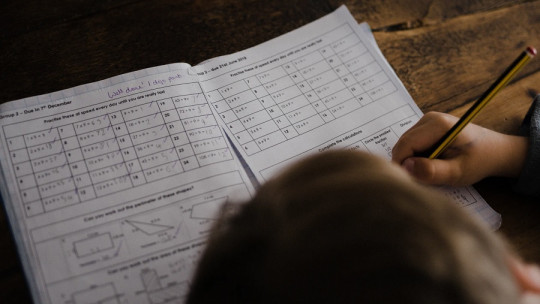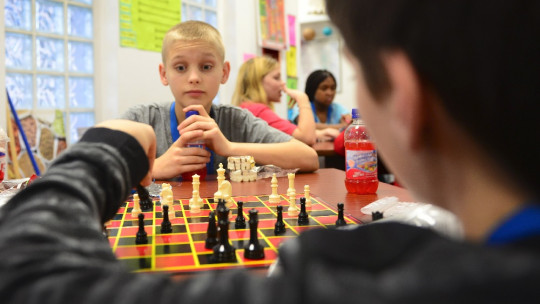
Modeling, also called imitation, observational learning or vicarious learning, is a fundamental intervention strategy, alone or in conjunction with other techniques, for the psychotherapist who uses the cognitive-behavioral paradigm as a reference model. This article from PsicologíaOnline aims to analyze the topic of Shaping: definition, key factors and areas of application in psychotherapy. Thus visualizing a triple point of view.
Article summary
Firstly, as an introductory theoretical framework, we briefly describe the fundamental principles underlying modeling as well as the processes involved in it.
Below we propose a general procedure for its application ,the main technical variants based on a series of dimensions, key factors and basic principles involved in the effective use of modeling in psychotherapy. Finally, some of the most relevant applications that have been made of modeling, in the field of health psychology and psychotherapy, in recent years.
Theoretical framework
The study of imitation in Psychology It was almost completely ignored until the pioneering work of Miller and Dollard (1941). These authors reviewed the theories that existed at that time and formulated their own concept of imitation using a basically behavioral context. Twenty years had to pass before the importance of learning by imitation for the development of personality and social learning was clearly evident in a book by Bandura and Walters (1963). Since then, Bandura’s name has become almost synonymous with the study of observational learning and its effects on social behavior. The term ‘modeling’ has replaced the imitation as a generic expression that encompasses a variety of observational learning processes.
Although there are various theories about the nature and processes that take place in modeling, the position defended by Bandura seems to be the one that enjoys the greatest acceptance today (Kanfer and Goldstein, 1987). In 1969, with the publication of Albert Bandura’s book ‘Principles of Behavior Modification’, the foundations were laid for operationalize modeling techniques in social learning theory (Olivares and Méndez,1998).
Modeling: theoretical foundation
Cormier and Cormier (1994) define modeling as “the observational learning process where the behavior of an individual or group – the model – acts as a stimulus for the thoughts, attitudes or behaviors of another individual or group that observes the execution of the model”
The basic features of the theoretical foundation of modeling, proposed by Bandura himself, are presented in a concise and concrete way by Olivares and Méndez (1998) in the following terms:
Basic Assumption
Most human behavior is learned by observation through modeling.
Fundamental Premise
Any behavior that can be acquired or modified through direct experience is, in principle, susceptible to being learned or modified by observing the behavior of others and the consequences that arise.
Symbolic Mediation Processes
The subject acquires symbolic representations of the modeled behavior and not mere specific ER associations.
General Application Procedure and Effects of Modeling
The subject observes the model’s behavior and imitates it with the objective of:
- Acquire new response patterns
Acquisition Effect: Learning new behaviors or behavioral patterns that were not initially included in the person’s behavioral repertoire.
- Strengthen or weaken responses
Inhibitory Effect: The observer notes the lack of positive consequences or the contingency of negative consequences after the model performs the behavior.
Disinhibitory Effect: Disinhibition of a behavior by the observer after verifying that the model performs it without experiencing any negative consequences.
- Facilitate the execution of responses already existing in the subject’s repertoire
Facilitation Effect: It facilitates the execution of behavioral patterns previously learned as a consequence of observing a model.

Basic processes involved in modeling
Bandura and Jeffery (1973) distinguish four basic processes involved in any modeling process:
The activity of the observer consists of concentrating on what is modeled.
It refers to the symbolic or linguistic coding, cognitive organization and covert rehearsal of the presented model.
The ability of the observer to reproduce, rehearse or practice the behavior whose model has been observed.
Favorable predisposition of the observer to assume the proposed objectives as their own through the use of modeling techniques.
Each and every one of these basic processes, common in all modeling proceduresare deeply interrelated and are essential factors (prerequisites) for the success of any therapeutic process that uses modeling as a basic intervention strategy.
General procedure for applying modeling
Although modeling can be used through multiple technical variants, as I will list later, it is possible to offer, based on the work of various authors (Cruzado, 1995; Olivares and Méndez, 1998), a basic sequence in its application that would include the following nine basic steps:
- Establishment of therapeutic objectives, short, medium and long term.
- Hierarchization (progressive difficulty), if necessary, of the behaviors to be modeled.
- The therapist provides specific instructions to the client about the key aspects to attend to during the modeling process:
3.1. Stimuli present situational
3.2.Dimensions relevant to the model’s behavior.
3.3. Consequences that arise after carrying out the behavior.
- The model executes previously established behaviors and verbally describes what it is doing and the anticipated consequences of its behavior.
- The therapist asks the client to describe the behavior carried out by the model, its antecedents and its consequences.
- Instruct the client to put into practice what was observed in the session.
- Support the client during performance (verbal cues or physical guides) and provide positive feedback.
- Carry out the necessary behavioral tests until the behavior is consolidated.
- Planning therapeutic tasks between sessions.
Classification of modeling techniques
Modeling presents a large number of technical variants, classifiable based on a series of basic dimensions (Labrador et al., 1993; Olivares and Méndez, 1998):
- Observer Behavior:
1.1.Passive Modeling: The subject only observes the model’s behavior, without reproducing it during the training session.
1.2. Active Modeling: The subject observes the execution of the model and then reproduces the modeled behavior in the same treatment session.
- The Presentation of the Model:
2.1. Symbolic Modeling: Modeling is carried out through a video recording, film, cassette or any other audiovisual medium.
2.2.Live Modeling: The model carries out the behavior in the presence of the observer
2.3. Covert Modeling: The subject must imagine the model’s behavior.
- The Appropriateness of the Behavior of the Model:
3.1. Positive Modeling: Model appropriate behavior or goal-behavior.
3.2. Negative Modeling: Model unwanted behaviors.
3.3. Mixed Modeling: Use of negative modeling followed by positive modeling.
- The Degree of Difficulty of the Behavior to Model:
4.1. Modeling of Intermediate Behaviors: Terminal behavior is decomposed into intermediate behaviors that are progressively modeled and assimilated by the subject.
4.2. Target Behavior Modeling: In cases where the target behavior is not excessively complex, it is modeled directly.
- The Number of Observers:
5.1. Individual Modeling: Modeling is performed before a single observer, generally in therapeutic contexts.
5.2. Group Modeling: Modeling occurs before a group, generally in educational contexts.
- The Number of Models:
6.1. Simple Modeling: Presentation of a single model
6.2. Multiple Modeling: Various models are used, different and similar to the observer.
- The Identity of the Model:
7.1. Self-modelling: The model is the observer himself. Use of audiovisual media.
7.2. Modeling: Model and observer are different people. The most common strategy.
- The Nature of the Model:
8.1. Human Modeling: The model is a person who must have characteristics of similarity and/or prestige for the observer.
8.2. Non-Human Modeling: Cartoons, puppets, dolls or fantastic beings are used as models, preferably (although not exclusively) with children.
- The Competence Shown by the Model:
9.1. Mastery Modeling: The model has the necessary skills and resources to effectively handle the situation from the beginning.
9.2. Coping Modeling: The model initially shows similar skills to the observer and progressively demonstrates the skills necessary to resolve the situation in a satisfactory manner.

Key factors of modeling effectiveness
The simple observation of the behavior of a third party does not necessarily guarantee obtaining significant psychotherapeutic results. There are a series of key factors and variables that need to be taken into account when planning, by the psychotherapist, a modeling procedure with certain guarantees of success (Kanfer and Goldstein,1987):
A) Factors that improve acquisition (attention and retention)
Model Features:
- Similarity (sex, age, race and attitudes).
- Competence.
- Cordiality.
- Prestige.
Observer Characteristics:
- Information processing and retention capacity.
- Uncertainty.
- Anxiety level.
- Personality factors.
Characteristics of the way in which the model is presented:
- Real or symbolic model.
- Several models.
- Progressive skills model (coping)
- Graduated procedures.
- Instructions.
- Commentary on features and rules.
- Summary made by the observer.
- Rehearsal.
- Minimization of distracting stimuli.
B) Factors that improve execution (reproduction and motivation)
Factors that represent an incentive:
- Vicarious Reinforcement.
- Vicarious extinction of the fear of responding.
- Direct reinforcement.
- Imitation.
Factors that affect the quality of the implementation of the behavior:
- Behavioral test.
- Participatory modeling.
Factors affecting the transfer and generalization of results:
- Similarity training situation-subject natural environment.
- Practice answers.
- Incentives in the natural environment.
- Learning principles.
- Variations in the training situation.
Fundamental principles of effective modeling
Taking as reference the above and based on the contributions made by various authors (Cormier and Cormier,1994;Gavino 1997;Kanfer and Goldstein 1987;Muñoz and Bermejo,2001;Olivares and Méndez,1998) in relation to the effective application of modeling In a psychotherapeutic context, it is possible to extract a series of guiding principles, both with respect to the modeling itself and the process of behavioral rehearsal and feedback, necessary in any effective modeling process:
Modeling Principles
- Optimization of the model used in the process. Characteristics similar to the observer, prestige, similar competence – coping competence or emphasis on affective components.
- Using a variety of models.Mastery,Negative,Self-modeling,Simple……
- Graduation and hierarchy of the modeling process. Decomposition of complex behaviors into simpler ones that facilitate and ensure learning.
- Use of learning strategies that favor the assimilation process. Use of explanatory summaries (client or therapist), repetition of essential keys, elimination of distracting stimuli (noise, anxiety…) or use of specific instructions before-during-after modeling.
- Programming of reinforcers for the model’s behavior. The execution of the desired behavior, by the model, is systematically reinforced.
Principles of Conduct Testing
- Similarity between the programmed practice and the client’s natural environment.
- Repetition and variety of training situations.
- Scheduled practice in the client’s natural environment
- Use of induction means against behaviors of special difficulty. For example through the use of physical or verbal guides, support and advice, repeated practice by fragments of behavior, progressive increase in time / difficulty / risk of the practice or use of complementary techniques such as chaining and shaping.
- Programming effective reinforcers in the client’s natural environment
Feedback Principles
- Specific Feedback. Avoid generalities, ambiguities and excessive length. Clear, short, concise and concrete feedback.
- Behavioral Feedback. Focus on the behavioral aspects of the behavioral test, above personal evaluations.
- Understandable Feedback. Adapt to the client’s own language, limiting technical jargon and unnecessary and superfluous complexity.
- Positive Feedback. Limit unnecessary criticism and encourage small progress and efforts to change.
- Flexible feedback. Use of other forms of feedback, such as video recording, so as not to depend exclusively on verbal feedback.
Modeling application areas
At some times, modeling is applied as the only therapeutic strategy to help the client acquire responses or extinguish fears. In other circumstances, modeling is a component of a global intervention strategy (Muñoz and Bermejo, 2001; Cormier and Cormier, 1994 )
In recent years, there have been numerous successful applications of intervention strategies based on modeling in the field of health psychology and psychotherapy. Some of the most significant are the following:
- Many of the clinical applications of modeling principles fall into the category of disinhibitory effects. The behaviors inhibited by fear or anxietyAs in the case of phobias, they have been successfully treated by having phobic individuals witness the models carrying out these feared behaviors and experiencing positive consequences (Bandura, 1971).
- The use of inhibitory modeling effects has also received significant attention in clinical situations. Clients who express excessive socially disapproved behaviors (e.g. alcoholics or criminals with difficulties controlling their behavior) can strengthen their own inhibitions against these behaviors by observing a model who experiences negative consequences for performing those same actions (Bandura, 1971).
- In clinical contexts, modeling has been used in the treatment of behaviors inhibited by fear or anxiety. The classic study by Bandura, Blanchard and Ritter includes a successful application of modeling techniques to the treatment of snake phobia. The subjects of this study were divided into three treatment groups and one control group. The three The treatment chosen were: symbolic modeling, live modeling with guided participation, and a classic treatment based on systematic desensitization. The results of this study showed that the two modeling groups were superior to the sensitization group, and that the participant modeling group was even better. than the group whose treatment strategy was based on the use of symbolic modeling (Kanfer and Goldstein, 1987)
- Modeling is an effective technique for behavior modification of people of all ages (children, adolescents and adults), of many types (normal, delinquent, retarded, psychotic) and with many different problems (fears, behavioral deficits, behavioral excesses). Modeling can be equally effective with one’s own professionals and paraprofessionals who are involved in helping others change their own behavior (psychotherapists, nurses or social workers). The training of this type of professional has successfully used examples of the desired behavior – symbolic modeling – and demonstrations of the behavior in question -behavioral modeling- (Kanfer and Goldstein, 1987).
- The modeling has been shown to be effective for reinstallation in psychotic adults of previously existing behaviors in their repertoire such as self-care skills and language or for the promotion of prosocial and altruistic behaviors (Otero-Lopez et al., 1994).
- Participant modeling has been shown to be especially effective for coping with anxiety-generating situations. Participant modeling favors the immediate achievement of high levels of behavioral and attitudinal change and one’s own perceived efficacy when handling stimuli that produced fear. Participant modeling in combination with self-verbalizations (thinking out loud) significantly reduced specific phobias. It has also been applied to reduce avoidance behaviors and the feelings associated with situations or activities that cause fear in the subject. With the use of participant modeling with phobic clients, the satisfactory execution of activities or situations that cause fear helps the person learn effective management of these types of situations. Others Applications of participant modeling include people with behavioral deficits or lack of skills such as social communication, assertiveness or physical well-being (Cormier and Cormier, 1994).
- Cognitive modeling in combination with self-instructional training has been successfully applied to train schizophrenics hospitalized patients to modify their thoughts, attention and verbal behavior -self-verbalization- while performing tasks (Cormier and Cormier, 1994).
- He modeling is applied in phobic problems,due to its disinhibitory effects, within the field of Health psychology in aspects such as reducing fears of surgical interventions or dental treatments (Ortigosa et al., 1996).
- In the health field, modeling is used to inhibit unhealthy habits,such as in drug addiction prevention programs (Fraga et al., 1996), as well as in numerous health problem prevention programs, in the psychological treatment of patients affected by various medical problems and in preparation for painful medical interventions. (Muñoz and Bermejo,2001).
- Modeling is a fundamental strategy within the package of techniques commonly used in Behavior Modification for the social skills and assertiveness training (Caballo,1993;Gavino 1997).The fundamental techniques or components used in the training of social skills and assertiveness are; 1) Instructions 2) Modeling 3) Behavior rehearsal 4) Positive reinforcement and 5) Feedback (Olivares and Méndez,1998).
- Likewise, modeling constitutes a fundamental link in training in stress inoculation, applicable to a wide variety of disorders (Muñoz and Bermejo, 2001).
This article is merely informative, at PsychologyFor we do not have the power to make a diagnosis or recommend a treatment. We invite you to go to a psychologist to treat your particular case.
If you want to read more articles similar to Modeling: Definition, key factors and areas of application in psychotherapy we recommend that you enter our Cognitive Psychology category.
Bibliography
- Ardila, R. (1980). Behavior therapy: fundamentals, techniques and applications. Bilbao. Brouwer’s Desclée
- Bandura, A. (1969). Principles of behavior modification. New York: Holt, Rinehart & Winston
- Bandura, A. (Ed.) (1971). Psychological modeling: Conflicting theories. Chicago: Aldine-Atherton Press.
- Bandura,A., and Jeffery,R.(1973).Role of symbolic coding and rehersal processes in observational learning.Journal of personality and social psychology,26,122-130.
- Bandura, A. (1982). Theory of social learning. Madrid: Espasa-Calpe.
- Bandura, A. (1986) Social Foundations of Thought and Action: A Social-Comparison Theory. Englewood Cliffs: NJ: Prentice Hall.
- Caballo,V.(1991).Manual of therapy and behavior modification techniques.Madrid. XXI century.
- Caballo,V.(1993).Manual for evaluation and training of social skills Madrid.21st century.
- Cormier,W. and Cormier,L.(1994).Interview strategies for therapists.Bilbao.DDB.
- Cruzado,J. (1995). Modeling techniques. in FJLabrador and JACruzado and M.Muñoz (eds.). Manual of behavior therapy modification techniques. Madrid. Pirámide.
- Fraga,Y.;Mendez,C. and Peralbo,M.(1996). Effects of modeling on smoking behavior: the role of the consequences of modeling behavior. In Behavior Analysis and Modification, 81, pages 137-172.
- Gavino,A.(1997).Behavioral therapy techniques.Barcelona.Martinez Roca.
- Kanfer,F. and Goldstein,A.(1987).How to help change in psychotherapy.Bilbao.Ed.DDB
- Labrador, F.; Cruzado, J. and Muñoz, M. (1993). Manual of Behavioral Techniques and Therapy. Madrid. Pyramid.
- Labrador, F., Echeburúa, E. and Becoña, E. (2000). Guide for choosing effective psychological treatments. Madrid. Dykinson
- Mayor, Yy Labrador, F. (1984). Behavior modification manual. Madrid. Alhambra.
- Miller,N. and Dollard,J.(1941).Social learning and imitation.New Haven.Yale University.
- Muñoz,M. and Bermejo,M.(2001).Stress Inoculation Training.Madrid:Synthesis.
- Olivares,J. and Méndez,F.(1998).Behavior Modification Techniques.Madrid.Editorial Biblioteca Nueva.
- Ortigosa,J.;Méndez,F. and Quiles,M.(1996).Preparation for child hospitalization (II): Filmed modeling.In Behavioral Psychology,4,211-230.
- Otero-Lopez,J.;Romero,E. and Luengo, A. (1994). Identification of risk factors for criminal behavior: towards an integrative model. In Behavior Analysis and Modification, 20,675-709.
- Vallejo, M, and Ruiz, A. (1993). Practical manual of Behavior Therapy. Madrid. Business University Foundation.








